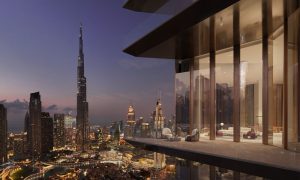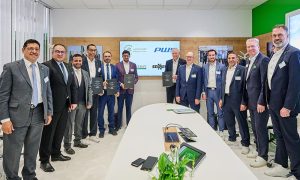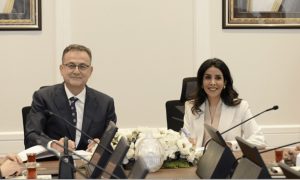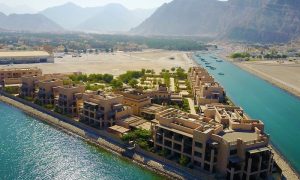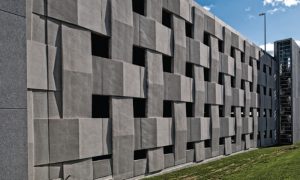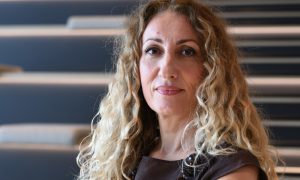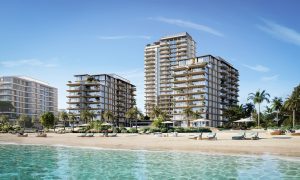On strong ground: Godwin Austen Johnson’s Nathan Cartwright
Middle East Consultant speaks to the firm’s partner about the evolving nature of the regional construction sector, challenges and sustainability beyond MEP

Godwin Austen Johnson (GAJ) is a multi-disciplinary consultancy that has contributed significantly to Dubai’s landscape in its over 25-year history. Through its headquarters in Dubai, the architecture and design firm has worked on iconic projects in sectors such as education, hospitality, corporate, retail, leisure and entertainment, residential, public sector and institution.
This year, despite generally tepid market conditions, the firm had a healthy start and is keen to close the year on a high note. “2017 started out quite strongly for us. We saw an increase in the number of RFPs we were receiving and our hit rate was improving, so the first half of the year was good,” says GAJ partner Nathan Cartwright.
“We had quite a long summer this year with Ramadan falling in May, so we saw a bit of a slowdown in the number of RFPs and awards during that time, but since the second Eid it’s improved, and we’re starting to see RFPs go up again. Contracts are also being awarded, so you can see that the industry and projects are moving. Hopefully, the end of the year will finish as strong as it started.”
Over the years, GAJ has demonstrated significant expertise in the education and hospitality sectors, which continue to be the firm’s bread and butter. “We’ve worked on a lot of schools after the 2009 slowdown. Last year, of the 15 schools that opened in Dubai, five were designed by GAJ. Schools have always been a good market for us.”
Cartwright notes that operator interest in schools is still healthy, but he believes the market is starting to get saturated.
“We’re still seeing interest from outside the UAE – operators want to come in from Europe and the United States and open schools here. Whether they are too late, I’m not sure, but there’s still interest and we’re getting inquiries. But my feeling is that the market will start to slow down.”
Apart from schools, a significant portion of GAJ’s business currently comes from the hospitality sector, driven by Dubai’s ongoing focus on tourism and the build-up to Expo 2020.
“The government mandate from a couple of years ago was that Dubai needed to build 100 hotels by 2020, and at present about 50% of our workload is from hotels and hospitality. Most of the RFPs, probably around 60-70% of them, are for hotels, in fact. That’s probably our strongest sector, followed by schools, mixed-used residential and master planning.”
Tackling Regional Challenges
Like many other players in the construction industry, GAJ faces a handful of regional challenges when working on projects across sectors. Perhaps the most common is restrictive and sometimes unrealistic project budgets. Cartwright believes the key to correcting this is early engagement with clients.
“Client budgets are pretty tight, and it’s quite demanding to meet those budgets in terms of design. Getting the budget right in the first place is key – if the budget is realistic with the client’s aspirations, then you’ve got a chance of meeting that budget and the project has a chance of going ahead. We still see some projects where the budget is unrealistic, but if we can be involved early enough on a project, we can help the client outline a proper budget. Here, we can say, ‘Okay, this is your budget and this is what we can do with your budget,’ and make sure the two are closely aligned.”
The good news is that project owners are increasingly involving both consultants and contractors at an early stage in the life of the project. “We’re seeing this more and more, and that’s good for a project, particularly if the client has a tight budget. With cases like this, we can work together with the contractor and their supply chain, so we can save time and help meet the client’s costs aspirations.”
“Design and build is increasing in the region, but the challenge is that in this part of the world you need the consultants to make the application to the authorities. So even if it’s a design and build project, we’ll take the project to schematic stage but then the contractor still needs to employ a consultant from their side to make the submission, so it’s not quite as clean-cut as it is in other places. But it does get the contractor onboard earlier, so it should provide some cost certainties for the client at an early stage.”
Going hand in hand with tight budgets, cost-cutting under the pretense of value engineering is another issue the architecture and design firm has to contend with.
“We try and push value engineering as a way of improving the design – however, a lot of people still see it as a cost-cutting exercise. Addressing this is tricky, because the concept is associated with reducing costs, but I think it should be viewed as more than that – it should be seen as a way to cut down on wastage and anything that’s not needed. We’re now trying to go through these exercises, so people know it’s about improving the design. And while it might add cost in the short term, it may reduce costs in the long term.”
Evolving Market
A highly competitive market, along with liquidity challenges, has pushed developers and project owners to change project requirements and expectations. A long-term view is gradually becoming the norm and keeping lifecycle costs in check is becoming a priority. The days of clients building to sell have also largely disappeared.
“With hotels, the operators are always pushing us to design as efficiently as possible, as they are thinking about long-term lifecycle costs. At the same time, our clients are trying to keep costs down, so there’s a balance to keep both bodies happy. In the past, you might have had more clients that would want to build, sell and move on, but fortunately that’s happening much less now.”
Cartwright continues, “With schools, our clients are generally owner/operators and they have a vested interest in the running cost of the schools and long-term lifecycle costs. Those clients are also looking for an edge, because there are so many schools and they’re looking to get the attention of parents and their children. These clients are now asking, ‘How can we be more sustainable and green?’ That’s always great to hear, and we’ve been able to do some really great work on projects recently.”
One project Cartwright highlights is the Arcadia Preparatory School in Dubai’s Jumeirah Village Triangle. He notes that the project owner wanted to have an edge over its competitors and was keen on doing the right thing in terms of sustainability.
“We used a turbo cool chiller, which is around 30% more efficient than a normal chiller – it uses magnetic bearings rather than mechanical bearings. The problem with turbo cool chillers, and why they are not used more often in the region, is because they are not very stable at high temperatures. So, to get this to work, we needed to couple it up with a cooling tower, and the problem with cooling towers is that DEWA won’t allow you to use potable water for the makeup water. To get around this, we implemented grey water recycling and also collected condensate to use as the makeup water. That proved to be enough water to run the cooling tower. It’s a nice little ecosystem which saved the client in terms of running cost and they were very happy with the result.” Cartwright says proudly.
In terms of sustainability, Cartwright notes that MEP has a significant part to play but believes the industry is placing too much focus on that one element in built environments, rather than taking a broader approach right from the start.
“A lot of people think sustainability is MEP-related, but the passive measures, in terms of getting the right orientation and the building getting the right shading, have a far greater effect than the active measures you apply afterwards. These measures are also the least costly to implement, so I think it’s a bit of a misnomer that sustainability is only MEP. MEP is important and plays a massive part, but the non-MEP elements are critical as well. Getting the building right in the first place in terms of design and the other elements is just as important.”






